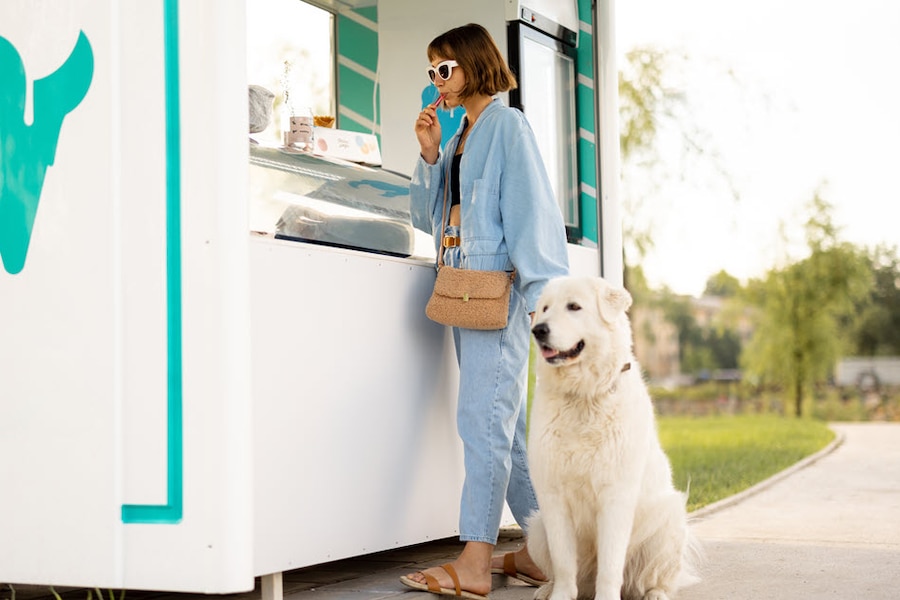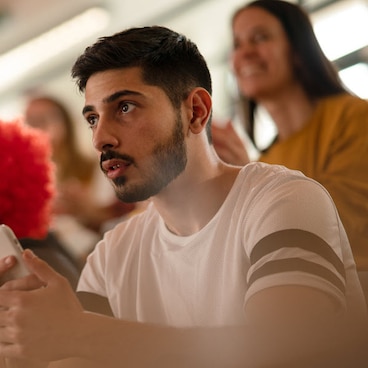
Walk into any boutique fitness studio and you'll likely witness “treat culture” in action: people emerging from a workout, clutching $14 smoothies packed with adaptogens and protein—not just for recovery, but as a reward for showing up. For many Millennials and Gen Zers, that specialty drink, spontaneous Target run, or surprise DoorDash dinner isn’t just a splurge, it’s self-care. But as the popularity of these impulse buys grows, so does the need for a look at its impact on personal finance.
What is treat culture?
Treat culture describes the trend of younger generations rewarding themselves regularly with purchases that offer instant gratification. The splurges can be small, like coffee, lunch out, and sweet treats, or sometimes big, like new headphones. Buying a treat is a form of self-care and offers a brief escape from financial realities for young spenders who live in an economy where the dollar doesn’t go as far as it did for their parents.
While “treat culture” may sound like a freshly minted concept, its roots aren’t new. “Back in the ‘80s, you would go to the mall with that same sort of feeling of ‘how can I pay a little bit of money to make myself feel a little bit better?’” says Nate Astle, a Certified Financial Therapist™. “The tale is as old as time, but we just call it different labels based on the times.”
Still, there’s something distinctly modern about the evolution of treat culture. Not only have we experienced a cultural shift towards prioritizing mental health and self-care, but social media and influencers have supercharged the temptation to impulse buy through captivating TikToks, curated Instagram posts, and memes about “emotional support iced coffee.” This makes these small splurges feel universal and almost expected—as if one can only get through the day if they self-indulge a little.
Why do we love treating ourselves?
Treating ourselves taps into something deeply human. However, Dr. David Myers, a renowned social psychologist, author, and professor at Hope College, points out the upside of indulging in moderation. “It’s no wonder the super-rich are not much happier,” he says. “There’s a case to be made for money being better spent on multiple small experiences.”
Occupational therapist and Gen Zer, Holly Ford offers another window into the emotional side of impulse shopping. She sees unplanned purchases as a way to recalibrate. “I most often treat myself after a particularly difficult day or week,” she explains. “It’s a great way to transition out of a tough or overwhelmed headspace and into a lighter and happier mood.”
This perspective highlights how treating ourselves is not just about the object or experience—it’s about shifting our emotional state and seeking comfort or joy in moments of stress.
But there's a fine line between mindful retail therapy and mindless spending.
It’s a dopamine-seeking behavior where we use the treat as a way to feel a little happy chemical. That, by itself, isn't a problem. The problem comes when it’s not something we have a line item for in our budget, when we’re doing it just because we’re having a strong emotion in the moment.
- Nate Astle, Certified Financial Therapist
So, the issue isn’t the treat itself—it’s when financial behavior becomes our only emotional coping mechanism and a form of escapism that can become excessive. “It’s using a financial solution to an emotional problem,” Nate says. “Do we actually need the ice cream or whatever it is on Amazon? Probably not. What we need is connection or self-compassion—we need mindfulness. The problem arises when you don’t have other ways to meet your needs.”
How to bring our budget in line with our values
How can you strike the balance between a $14 happiness boost and multiple small indulgences that can add up to hundreds spent on impulse buying without realizing it?
Nate recommends starting with your values: “When you think about how you want to spend money, what is the most important thing to you and why?” he says. “In my mind, every line item in your budget needs to be directly tied to something that is a deep character value of yours.”
For example, if you grew up cherishing sweet treats, indulging in the occasional ice cream cone should feel rewarding. Taking this approach leads to less guilt later because it helps your purchases align positively with your interests.
Holly’s strategy is to enjoy little luxuries with intention. “Getting a little treat can be a great form of self-care. But like most things, it’s best in moderation,” she says. That latte usually tastes sweeter when it's purchased once a week instead of twice a day.
How to tap into financial guilt to get back to our goals
Overspending on a treat, or multiple treats, can lead to guilt. But guilt isn’t inherently bad. “Guilt is what we feel when we act outside of our values,” Nate explains. “While it isn’t a pleasant emotion, it can sometimes be useful like the rumble strips on the side of the highway.”
“When we have financial guilt, our mind is telling us that our spending doesn’t match the way we want to spend,” he adds. “Use that information to do something different.”
Shame, on the other hand, is more damaging than guilt. “Shame is the enemy of change,” he says. “It’s one of the things that keep people financially stuck. Feeling like the problem isn’t just a behavior shift but a broken piece of your character is incredibly discouraging.”
Nate advocates for self-awareness and compassion when dealing with treating yourself. “We’re doing our best, so let’s give ourselves some compassion while still taking accountability when pursuing larger goals,” he says.
Know when and why to treat yourself
Like any relationship with money, engaging in treat culture works best when it’s intentional, not reactive. Knowing why you’re reaching for that protein shake can make all the difference between a mindful indulgence and an overlooked budget item.
As Holly puts it, “If you haven’t had a treat in a while, take a moment to think about all of the hard work that you’ve probably been doing. Get a little treat to show some appreciation for yourself!”
Just make sure there’s room in the budget first.


